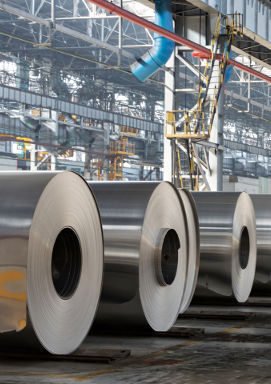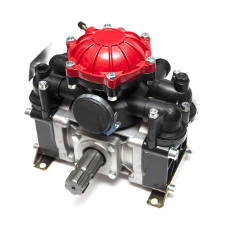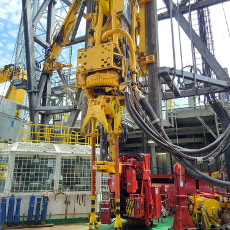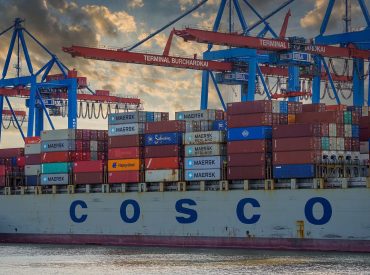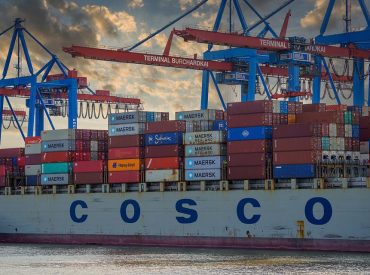We take immense pride in unveiling our latest masterpiece – our digital brochure. Packed with insights, expertise, and solutions that can transform your business, it’s a must-have resource for industry leaders and enthusiasts alike. Ready to explore a world of possibilities? Don’t miss out. Download our brochure today and embark on a journey of excellence with Refteck.
Supply Chain Management: Operations, Processes, and Planning
“A goal without a plan is just a wish.”
Antoine de Saint-Exupéry
Companies must stay one step ahead of global circumstances in this ever-changing global market. The supply chain management process, or SCP, comes into play here. It’s the process of organising your business to meet your customers' needs. The goal is to be as efficient and profitable as possible.
“Having a plan is the difference
between success and failure”
Refteck Solutions provides strategic supply chain management to assist you in adapting to this challenging environment. In this article, you'll find a brief idea of how we can assist your business.
 We'll look at:
We'll look at:- some basic / key points to keep in mind.
- steps to define your supply chain management operations, processes & planning.
- the example of Tesla and its owned supply chains
Let’s transform your business today
When it comes to procurement and supply chain management, there're two quick but important things to remember:- Adaptability: Your strategy must be able to adapt to an ever-changing market.
- Dependability: To increase profits and meet demand, each step must be dependable. From the ordering of raw materials to the delivery of finished goods.
Operations
The supply chain management operations control the entire design of how a company plans, creates, receives, and meets demand products. Fortunately, there're several steps you can take to ensure your company's supply chain management is properly planned.
- Relationships with Customers
- Customer Care
- Demand Controls
- Order Completion
- Flow of Production
- Relationship with the Supplier
- Product Creation
Building customer loyalty begins with clear communication and a trusting relationship. Suppliers must always be open and honest with their customers about the status of their orders. By putting the customer first, you can ensure that all operations are carried out for their benefit.
2. Customer Care
Customer service issues are unavoidable due to the unpredictability of supply chains. One way to provide a good experience is to improve communication and information delivery between your team and customers. But it's not the only one. It's also suggested:
- Simplify the provision of technical and operational support to your customers who require it.
- Improve your overall performance and processes to reduce the likelihood of problems occurring.
Trying to apply a "standard" procedure when demand is so volatile is a mistake. As a result, planning demand and optimising inventory control are critical steps in this process. This ensures a faster response time and increases the agility of your business. Not to mention that sales and customer satisfaction will improve.
4. Order Completion
Given that users can place orders with a single click on digital platforms, it’s unnecessary to assign staff to handle this step. However, if you don’t implement a strategy to improve and streamline your order fulfilment, you may encounter the following issues:
- Excessive use of your shipping materials.
- Address redundancies
This step entails determining how much money you have to produce a product. This way, you'll have enough inventory to meet demand while avoiding spoilage and running out of storage space. By properly organising yourself, you can reduce the possibility of shortages due to insufficient orders from your company.
6. Relationship with the Supplier
Remember that your relationship with suppliers must be approached strategically. It must always be beneficial to both parties. The two most important factors to consider are effective communication and the establishment of a solid and clear agreement.
7. Product Creation
The goal of creating a product is to respond to a consumer need with it. You cannot ignore the process of constantly adapting your product to their needs (and that includes branding or packaging). You can't even forget about adding new features that will result in, say, a new version of the product. As society advances, so will your product and brand.
Processes & Planning
- Planning
- Sourcing
- Making
- Delivering
- Returning
 1. Planning
1. PlanningPlanning in supply chain management is the first and most important step. To control inventory and the manufacturing process, experts advise planning to match demand with supply. This avoids overspending on warehouse space or running out of raw materials for your manufacturing, both of which slow down product delivery.
2. Sourcing
Sourcing entails having what you want, when you need it, and efficiently responding to your customers' demands. Companies use vendor analysis or purchasing statistics in this way to determine which vendors can provide the goods and services you require... when you require them.
3. Making
This is the stage at which the materials are transformed into products that will meet the needs of your customers. During this stage, businesses focus on assembling, testing, and packing. Furthermore, it is where you can take advantage of customer feedback.
4. Delivering
This is, as you might expect, the most important step in the supply chain. After all, if your product cannot be delivered to your customer, the preceding steps are pointless. It’s recommended that you offer them the following to establish a strong relationship with them:
- Details about the order's status.
- Ensure that the customer receives the order as expected.
This is another critical point in customer support operations. It’s also known as reverse logistics. A poor returns service can tarnish your brand's image and result in dissatisfied customers. Make sure your users can easily and quickly return items.
The Tesla Case
Although we have previously described how a typical supply chain would operate, there're numerous approaches to supply chain planning. Tesla is an example of this. Elon Musk's company has aimed to change the way vehicles are manufactured in the United States. And how they have designed their own supply chain is a part of this transformation.In this sense, rather than having a long chain that cheaply supplies them with the various parts they require for their electric vehicles... Tesla has chosen a vertical supply chain. For example, the company manufacture their own batteries for their automobiles. They own the manufacturing plants for their vehicles and don't rely on third parties.
Furthermore, taking advantage of user digitisation, the vehicles themselves receive updates and improvements via cloud technology. So, they even have a digital supply chain!
















